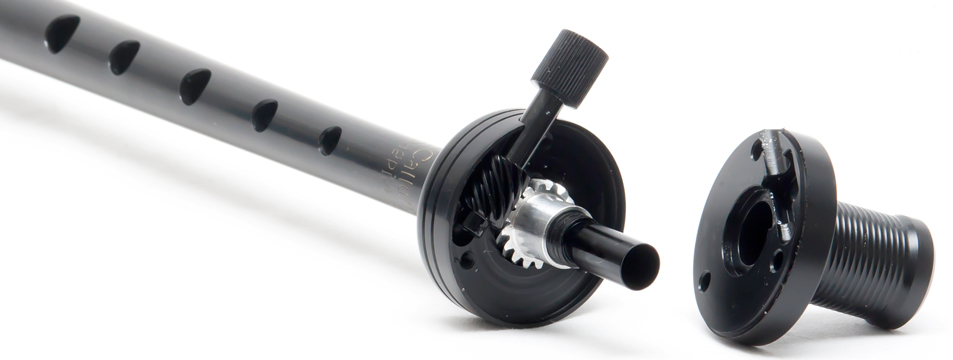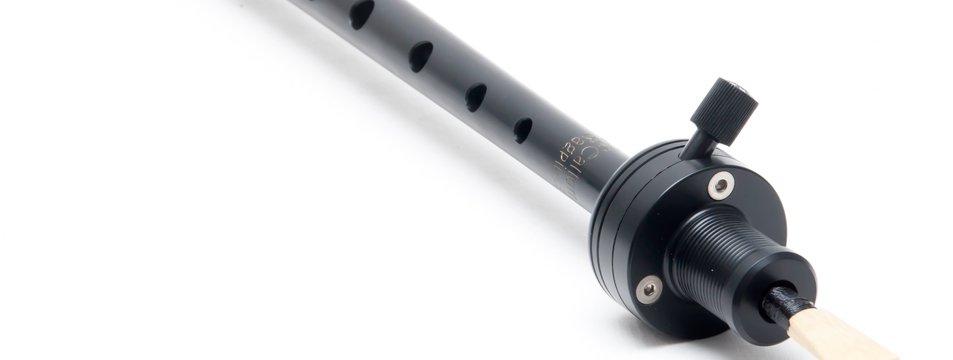FREQUENTLY ASKED QUESTIONS
How does it tune quicker?
The solution is simple. Just twist the tuning dial clockwise to sharpen your reed and counter-clockwise to flatten your chanter pitch. You can do this while you play so you know immediately once your chanter matches your drones. Keep in mind that this device adjusts the full range and not individual holes.
What range is possible on this chanter?
There are 2 versions available. A Band chanter with a range of 478Hz - 484Hz (b-flat tuner). While the Bb (B flat) | Concert Pitch chanter has a range of 463-469Hz (B flat tuner)
Can this chanter change pitch on individual holes?
The tuning function on this chanter moves the reed seat up and down, effectively changing the pitch of the entire scale at once. Therefore if you need to change the pitch of an individual finger hole, you will need to use tape to make it flatter or other means to make it sharper.
Will I need tape on individual holes?
You may need tape on individual holes depending how your reed matches your chanter. Some reeds cause individual notes to sound flat or sharp compared to the other notes on your instrument, so some further adjustment may be necessary. However, this chanter is well balanced, so you should be content with it right out of the box.
What reed works best in this chanter?
The Campbell chanter is designed to work with all popular reeds on the market.
Are any notes affected more than others?
Regardless of chanter design, the top notes on a chanter will pitch up and down quicker than the bottom half with reed movement. The benefit with this instrument is that you can make the changes quickly to see where your reed naturally balances from top to bottom on the scale.
If I bump the chanter will the pitch change?
An important aspect of the design is friction that prevents the tuning dial to move with a light bump. This is especially important when you are moving your bagpipes in and out of your pipe case. There is very little risk in changing your tuning setting unless you actually try to change it.
Can I get a chanter in blackwood?
For now, the chanter is only available in quality polypenco.
FEATURES OF THE CAMPBELL CHANTER






